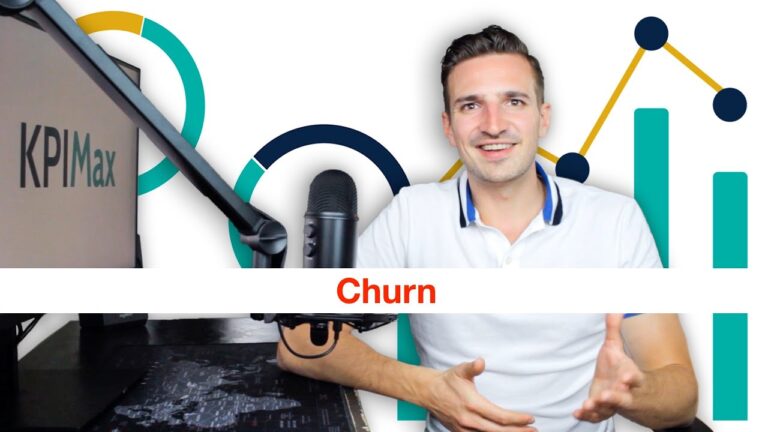Learn about CHURN and How to Do Calculate this SAAS Metric
Public This Post is a Collection of Public Facts, Free Learning Videos (Sourced from Wiki & Youtube) and All the Related Concepts to so that all the Relevant Content about this Topic is Available in 1 Place
What is Churn Rate ?
Churn Rate (sometimes called attrition rate), in its broadest sense, is a measure of the number of individuals or items moving out of a collective group over a specific period. It is one of two primary factors that determine the steady-state level of customers a business will support.
What is Customer Churn ?
Customer Churn is closely related to the concept of Average Customer Life Time. For example, an annual churn rate of 25 percent implies an average customer life of four years. An annual churn rate of 33 percent implies an average customer life of three years. The churn rate can be minimised by creating barriers which discourage customers to change suppliers (contractual binding periods, use of proprietary technology, value-added services, unique business models, etc.), or through retention activities such as loyalty programs.
It is possible to overstate the churn rate, as when a consumer drops the service but then restarts it within the same year. Thus, a clear distinction needs to be made between “gross churn”, the total number of absolute disconnections, and “net churn”, the overall loss of subscribers or members.
What is the Difference between Churn and Gross Churn ?
The difference between the two measures is the number of new subscribers or members that have joined during the same period. Suppliers may find that if they offer a loss-leader “introductory special”, it can lead to a higher churn rate and subscriber abuse, as some subscribers will sign on, let the service lapse, then sign on again to take continuous advantage of current specials.
What is Customer Survival Rate ?
When talking about subscribers or customers, sometimes the expression “survival rate” is used to mean 1 minus the churn rate. For example, for a group of subscribers, an annual churn rate of 25 percent is the same as an annual survival rate of 75 percent. Both imply a customer lifetime of four years. I.e., a customer lifetime can be calculated as the inverse of that customer’s predicted churn rate. For a group or segment of customers, their customer life (or tenure) is the inverse of their aggregate churn rate.
Gompertz distribution models
Gompertz distribution models of distribution of customer life times can therefore also predict a distribution of churn rates. For companies with a fast-growing customer base (e.g., digital media companies in a BCG-matrix problem child or star phase), confusion can arise between the statistical analyses associated with what percentage of the whole customer base churns in a given year – What percentage of the base of subscribers in all of 2010 churned out? – versus a particular customer cohort’s churn rate.
Cohort Based Approach Advantage
Taking those customers who subscribed in given month, say January 2010 – How many had churned out by January 2011? Examining churn for a fast-growing aggregated customer base will understate the true churn rate compared to cohort based approach to the calculation. The cohort based approach will also allow you to calculate the survival rate and the average customer life, whereas the aggregate approach can not calculate these two metrics.
What is Rotational Churn ?
The phrase “rotational churn” is used to describe the phenomenon where a customer churns and immediately rejoins. This is common in prepaid mobile phone services, where existing customers may take up a new subscription from their current provider in order to avail of special offers only available to new customers.
In most circumstances churn is seen as indicating that customers are dissatisfied with a service. However, in some industries whose services delivers on a promise, churn is considered as a positive signal, such as the health care services, weight loss services and online dating platforms
How to Do Churn Analysis in Excel ?
Churn analysis demonstration by a former Director of Retention Analytics for the second-largest US cable company. Use my tips to do a quick, but not perfunctory analysis of your customer churn data using Excel. I analyse publicly available Kaggle telco churn dataset using pivot tables, pivot charts, VLOOKUP, and perform Data Visualisation. Learn how to identify variables that are associated with increased churn, how to correctly categorize your continuous variables and ways to visually present your findings.
Probabilistically
Learn How to Do Churn Analysis in Excel in this Learning Video by Probabilistically?
Topics in this Learning Video
- 0:00 Kaggle telecom Churn Data
- 1:08 Data prep: Churn and Total Customers Flags
- 2:08 Calculate Churn Rate in pivot table
- 3:06 Churn rate split by categorical variables
- 3:26 Pivot chart of churn rate
- 4:15 Handling continuous variables
- 6:50 Using VLOOKUP to bring outside data
- 9:10 Churn Visualization and Reporting


